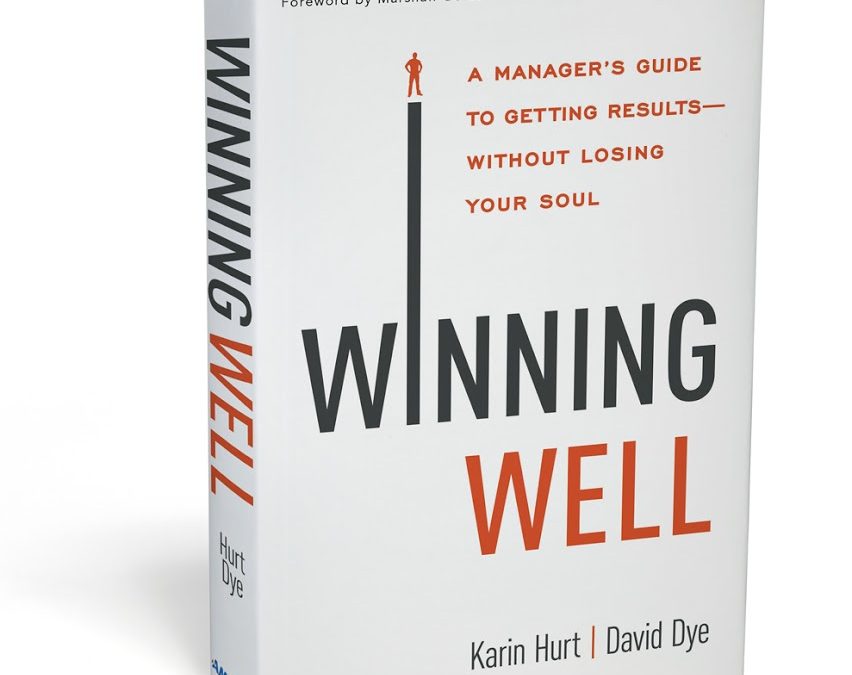Recently launching their exceptional new book, Winning Well, Karin Hurt and David Dye share their thoughts in a guest post.
Meet Simon, a call-center director supporting the business customers of a global telecom company. Quality was what mattered most for these valuable customers. So from Simon’s perspective, the new system the company had designed was genius.
Instead of customers typing their service orders in an email for employees to retype into the systems (which almost always contained errors), the customers now had an easy systems interface that would flow through to the backend systems.
The new approach was faster and provided higher quality and an added bonus: It worked on weekends. There was only one problem: The employees (and their union) hated it. And they had a point.
“What about white glove treatment for high-end customers?” “What about relationships?”
The union steward, Kenetra, was adamant that the change was“just proof” that management cared about the bottom line more than the customer experience.
In truth, both Simon’s and Kenetra’s points were valid. Customers wanted efficiency and differentiated service from well-trained employees like Kenetra.
It wasn’t either/or. It wasn’t management or the union. They needed to work together to build a customer-focused adoption strategy that the service reps could believe in.
And then the Simon called a meeting and asked the question that opened up the conversation. “What would it look like if this system was great for customers and employees?
This got everyone working together toward a positive vision and looking for solutions. In this case, both the union and management had a common goal: to improve the customer experience. Kenetra was honest about the union’s fear of lost jobs. Simon was honest about his concern over wasted time and productivity.
They outlined the benefits of the new system that they could all agree to and brainstormed the best use for the freed-up time.
They finally agreed that they would use the system to reduce the retyping work and instead train the service reps on more value- added tasks to create deeper connection with the customers. These behaviors would make customer relationships last longer and lead to future sales and the additional union work that would come with it.
Change requires confidence and inclusion, not selling. When you can take your audacious vision and make it feel real, practical, and achievable, your team will sail along with you.
6 Ways to Help Your Team Embrace Change
- Establish a clear vision.
Be crystal clear about what you want to accomplish. Communicate and reinforce your vision through every medium possible. It’s important to explain the reasons behind a change as well as to identify the specific behaviors you need from employees in each role.
- Be honest about the benefits.
The notion that all that employees care about is WIIFM—what’sin it for me?—is BS. Sure, employees want to know what’s in it for them. They equally want to know what’s in it for you and for their customers.
In the absence of information, people often jump to the most pathological conclusion. Leave out key information and they fill in the blanks with assumptions (e.g., the next thing you’ll do is down- size).
- Start small.
Don’t advocate for an idea or change that’s half-baked or full of flaws. Test it first with a small group, take their feedback seriously, and get it right. It’s tough to regain credibility. “Oh yeah, I admit it stank before, but now it’s better,” only leaves people wondering whysome bozo made a choice to sing praises for an idea, system, or process that was full of problems in the real world.
- Establish easy-to-access listening posts.
This is perhaps the most important part. Really listen to what your people tell you. Most important, respond to feedback with solutions, not selling.
- Leverage reluctant testimony.
Share as many testimonials as you can, especially from people who were doubtful at first. Get your most excited employees showing how your new idea, system, or process changed their world. Your most influential stories will come from the least likely suspects: the sales guy who never bothered with this stuff before, the new rep who’s now running circles around the old-timers because she uses the new system, the supervisor who got his entire team (including the union steward) performing acrobatics with the system.
- Involve the team in key decisions.
No one wants stuff done to them, or even for them. With them goes a lot further. Ask employees, “What’s working well and how do we leverage it? What enhancements do we need? Where should we head next?” All these questions go a long way. Include employees by involving them in your change efforts.

Karin Hurt (Baltimore, MD) is a top leadership consultant and CEO of Let’s Grow Leaders. A former Verizon Wireless executive, she was named to Inc. Magazine’s list of great leadership speakers.
David Dye (Denver, CO) is a former nonprofit executive, elected official, award-winning author, and president of Trailblaze, Inc., a leadership training and consulting firm.
For more information visit WinningWellBook.com



Thanks so much for spreading the Winning Well word, Terri! So appreciate your support.
My pleasure Karin!
So excited for you and David and your fantastic book Winning Well!!